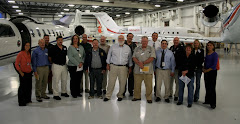
The Women of Innovation Planning Committee of the Connecticut Technology Council is seeking nominations of women in Connecticut for recognition of their efforts in the technology, science and engineering fields for the 2010 Women of Innovation Awards Dinner. The sixth annual awards dinner will be held at the Aqua Turf in Southington on January 28, 2010.
Nominate a Woman of Innovation Now (Nov. 6, 2009 deadline)
Honored will be women who are innovators, role models, and leaders who work as researchers, educators, managers or service providers in technology, science and engineering. Nominees can come from such fields as biotech, pharmaceuticals, telecom, software, computer hardware, electronics, alternative energy, nanotech, medical devices, IT, networks, communications and robotics.
Do you know a woman whose efforts should be acknowledged in science, engineering, technology research, or education, or is working in a company providing professional services to these communities, or is in a scientific, engineering or technology company management position? If yes, then please complete the nomination form by November 6th 2009.
Nominees are women who exhibit the extraordinary energy that powers a company or institution. They are hard working, entrepreneurial, and inspirational to others and motivated to excel. Nominating them allows us to recognize their efforts and their achievements.
Nominees may be growing or well-established in their careers. They may be shaping the future of their industry or institution, or starting a company, or serving as a role model for young women thinking about careers in technology, science, or engineering.
Nominees may also be young high school women, ages 18 or younger or college women, ages 18 to 25, who are enrolled as undergraduates or graduate students, who have excelled as young inventors, are academically proficient in a science or technology curriculum or have accomplished an extraordinary technology feat that should be recognized for its innovation and uniqueness.
The nomination process is open to women working in the technology, science, and engineering communities, in business or academia, and employed in Connecticut.
Consider these criteria:
1. Possesses at least three years of managerial or technical experience in a technology, engineering or science-related company. The candidate does not have to be at the CEO, senior manager or a senior academic faculty member. We wish to recognize women who are playing an important role at a variety of managerial levels.
2. Has created a culture of innovation through her efforts. For example, the nominee has moved or played a key role in moving a company or institution to adopt new practices, processes or paradigms.
3. Thinks creatively and solves problems. Has led a company’s or team’s efforts to generate breakthrough ideas for new products and services.
4. Has demonstrated leadership abilities. Is able to motivate people to perform at their best, make work meaningful and rewarding, foster commitment and innovation, and attract and retain top performers. Is able to mobilize and lead teams and projects. Serves as a mentor.
5. If within academia, the nominee should be engaged in technology research, or work, curriculum development, and inspires and encourages other women to pursue careers in technology, science, or engineering. Serves as a mentor.
6. If a high school student 18 or younger, has demonstrated exceptional academic achievement in the technology or science areas of study or who has displayed inventiveness or creativity in those fields.
7. If a college undergraduate or graduate student, has demonstrated exceptional academic achievement in the technology, or science or engineering areas of study or who has displayed inventiveness or creativity in those fields.
8. If in a professional services field such as law, finance, accounting, marketing or consulting, the nominee should have worked specifically with technology, scientific, or engineering firms.
Fill out the following form and submit it for consideration. All nominations are due by November 6th, 2009.









